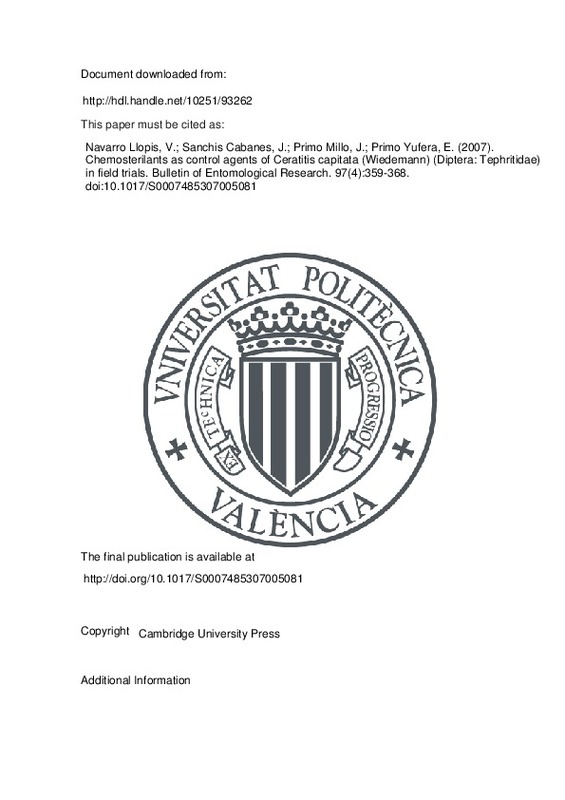JavaScript is disabled for your browser. Some features of this site may not work without it.
Buscar en RiuNet
Listar
Mi cuenta
Estadísticas
Ayuda RiuNet
Admin. UPV
Chemosterilants as control agents of Ceratitis capitata (Wiedemann) (Diptera: Tephritidae) in field trials
Mostrar el registro completo del ítem
Navarro Llopis, V.; Sanchis Cabanes, J.; Primo Millo, J.; Primo Yufera, E. (2007). Chemosterilants as control agents of Ceratitis capitata (Wiedemann) (Diptera: Tephritidae) in field trials. Bulletin of Entomological Research. 97(4):359-368. https://doi.org/10.1017/S0007485307005081
Por favor, use este identificador para citar o enlazar este ítem: http://hdl.handle.net/10251/93262
Ficheros en el ítem
Metadatos del ítem
| Título: | Chemosterilants as control agents of Ceratitis capitata (Wiedemann) (Diptera: Tephritidae) in field trials | |
| Autor: | Primo Yufera, Eduardo | |
| Entidad UPV: |
|
|
| Fecha difusión: |
|
|
| Resumen: |
[EN] Lufenuron is a chitin synthesis inhibitor, which is able to impede Mediterranean fruit fly, Ceratitis capitata (Wiedemann), reproduction. In laboratory trials, following ingestion of lufenuron, the eggs laid by female ...[+]
|
|
| Palabras clave: |
|
|
| Derechos de uso: | Reserva de todos los derechos | |
| Fuente: |
|
|
| DOI: |
|
|
| Editorial: |
|
|
| Versión del editor: | http://doi.org/10.1017/S0007485307005081 | |
| Código del Proyecto: |
|
|
| Agradecimientos: |
The authors thank Stephen Skillman for helpful suggestions
on the first version of the manuscript, Syngenta for
supplying technical grade lufenuron, and the R&D+i
Linguistic Assistance Office at the Universidad ...[+]
|
|
| Tipo: |
|







![[Cerrado]](/themes/UPV/images/candado.png)


